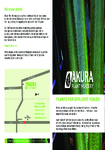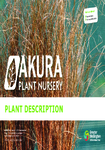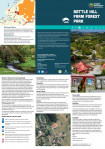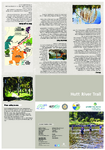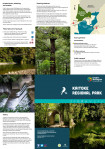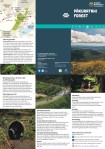-
Planting on coastal or other exposed sites
Trees in exposed locations are subject to buffeting and to the drying effects of wind. Trees in front line coastal locations are additionally exposed to the burning effects of salt…
alarm Published 08 Jul 2021 -
Plants for effluent fields
Plants can help your septic drain system to function at its best by removing moisture and nutrients from the soil. Plant cover is also important to reduce soil erosion.
alarm Published 08 Jul 2021 -
Plant descriptions
Descriptions of the plants available at Akura Plant Nursery.
alarm Published 08 Jul 2021 -
-
-
-
-
-
-

